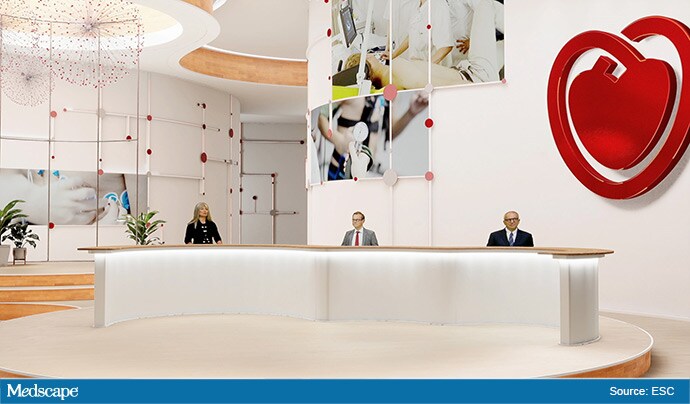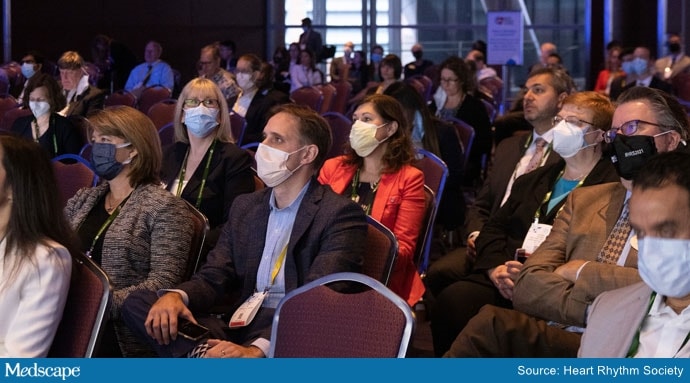As In-Person Conferences Resume, Docs Rethink Travel Frequency

Now that some travel restrictions have eased and vaccinations are readily available in the US, a few in-person conferences have taken place. But the “pandemic pause” has led some doctors to rethink their pre-COVID conference travel frequency.
“On average, [pre-pandemic], I would travel 25 to 30 weekends a year” to conferences and symposia,” Jagmeet P. Singh, MD, PhD, DPhil, told theheart.org | Medscape Cardiology, adding that “I don’t see myself going back to doing that again. I will choose my travel more selectively.”
Singh, from Massachusetts General Hospital and Harvard Medical School, Boston, gave an example: “As much as I would like to travel to Tokyo to give a lecture, I think traveling 4 days to give a 20-minute talk…is not cost-efficient and does not make sense.”
Martha Gulati, MD, president-elect of the American Society for Preventive Cardiology, said “I really love traveling,” but the Intergovernmental Panel on Climate Change report issued this month detailing faster-than-expected global warming and the need to dramatically cut greenhouse gas emissions “has made me rethink what should be essential travel.”
Merits and Drawbacks of a Virtual Conference
With more than 100 countries in some form of pandemic lockdown in March 2020, the American College of Cardiology (ACC) was one of the first medical conferences to pivot to a virtual format.
Gulati confided that she enjoyed the virtual meetings more than she had anticipated.
Notably, the European Society of Cardiology meeting in August 2020, for which conference organizers had a bit more time to prepare, was “outstanding,” she said, “one of the best that I have experienced.”

The ESC 2020 virtual studio.
Singh noted that a key benefit of a virtual meeting is that people around the world who might not have been able to attend in person — because of cost or inability to take time away from work or family — are able to access the science as it is being presented.
However, on a Zoom platform, “there’s always the potential for getting distracted, [unlike] a live session where you’re compelled to give your 100% attention,” he acknowledged.
Suzanne Feigofsky, MD, a cardiologist at the Iowa Heart Center in Carroll, agreed. “Before, you blocked your time and went. Now you are probably watching the meeting in your spare time” and multi-tasking.
However, as a parent to a 5-year-old and an 11-year-old, virtual meetings have been incredibly beneficial, Feigofsky added. In a recent viewpoint article in JACC, she described how female cardiologists who have young children face challenges if they wish to travel to and present at scientific sessions.
“Having the flexibility to learn on your own time has really been something wonderful that’s come out of the pandemic,” she said.
Michelle L. O’Donoghue, MD, MPH, Brigham and Women’s Hospital and Harvard Medical School, Boston, Massachusetts, concurred. “The virtual platform has made the at-home experience very appealing,” she said. “This is perhaps especially true for women with young families.”
O’Donoghue was hesitant to attend an in-person American College of Cardiology meeting in March of this year because it would have meant leaving her new baby, but she was able to chair sessions virtually.
Are Hybrid Scientific Sessions the Way of the Future?
The biggest downside to virtual meetings is the limited interaction with speakers and other attendees.
“I love going to the meeting as much for the science as for the people,” Feigofsky said.
“The benefit of the in-person meeting is what happens outside the sessions,” she elaborated. “Collaborations that happen, and just meeting people that you have admired and not worked with personally is invaluable.”
Gulati and Singh wholeheartedly agreed with that sentiment.
“The casual between-panelist banter that most attendees enjoy is missing,” said Singh, who attended the Heart Rhythm Society meeting in July in Boston. “It was amazing to actually have an in-person meeting after so long — collaborating and meeting all your colleagues. The level of engagement was phenomenal.”
He gave a lecture to about 100 attendees while another 300 people followed online “and everyone could benefit from live, unstructured banter,” he said.

Attendees at Heart Rhythm Society 2021.
More than 4000 people attended HRS in person and another 1500 or so tuned in virtually.
“As technology continues to evolve, it’s clear that a successful virtual meeting can be readily achieved, as was seen during the thick of the pandemic,” noted O’Donoghue. But “ultimately, a hybrid approach to conference attendance may make the most sense.”
“I hope that hybrid meetings will stick around,” Feigofsky said. “It allows us to include speakers and talented physicians that may not otherwise engage in those meetings and you can participate in a late-breaking trial and watch it virtually without having to go to the meeting. I think that is something that should stay.”
What Are AHA and ACC Meeting Organizers Planning?
It appears that the organizers of the major US cardiology conferences agree.
The American Heart Association (AHA) decided to offer a hybrid format for the 2021 Scientific Sessions in Boston in November because of anticipated potential travel difficulties, said Manesh R. Patel, MD, chair of AHA’s Committee on Scientific Sessions Program.
The 3-day hybrid event will include more than 500 sessions. The organizers are monitoring the Centers for Disease Control and Prevention’s recommendations, given the presence of the highly infectious Delta variant of COVID-19, and will share any updates as soon as possible with participants.
“We envision that we will have both in-person and virtual options for years to come,” said Patel, chief of the Division of Cardiology at Duke School of Medicine, Durham, North Carolina.
Similarly, Janice Sibley, ACC executive vice president for education and publications, said: “ACC will deliver hybrid events for the foreseeable future, [since] hybrid conferences offer the best opportunity for all interested parties — presenters, moderators, attendees — to participate in the way that best works for them.”
Attendees at ACC.21 Virtual, who came from more than 120 countries, “gave us very positive feedback,” she noted.
“All organizations are experimenting with new ‘fee versus free’ models for conference attendance,” Sibley added, and will likely continue to do so over the next couple of years.”
Registration fees for AHA members for the 2021 Scientific Sessions, for example, are $199 and $299 for the virtual meeting and $495 and $595 for the onsite meeting, for early bird and standard registration, respectively.
The registration fees for ACC.22 will be available mid October.
“See you online or in-person [in Washington] at ACC.22, April 2-4, 2022!” Sibley said.
Key Takeaways:
Virtual conferences allow those who could not afford to travel or take time away from work or family to attend
Only a live meeting gives people the opportunity to meet and collaborate in person with mentors and colleagues, which most consider just as important as the science
Some physicians plan to rethink very frequent travel to conferences and symposia for both lifestyle and environmental reasons
The ACC and AHA plan to provide a hybrid on-site plus virtual annual conference “for the foreseeable future”
Marlene Busko is an independent medical journalist who specializes in reporting about diabetes and endocrinology, cardiology, and nephrology. She lives in Montreal, Canada and enjoys hiking, biking, and skiing.
For more news, follow Medscape on Facebook, Twitter, Instagram, YouTube, and LinkedIn
Source: Read Full Article